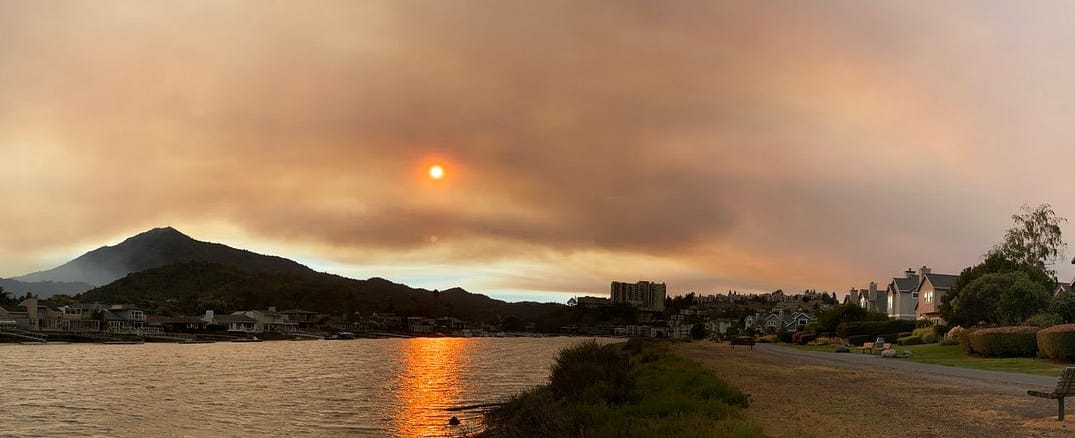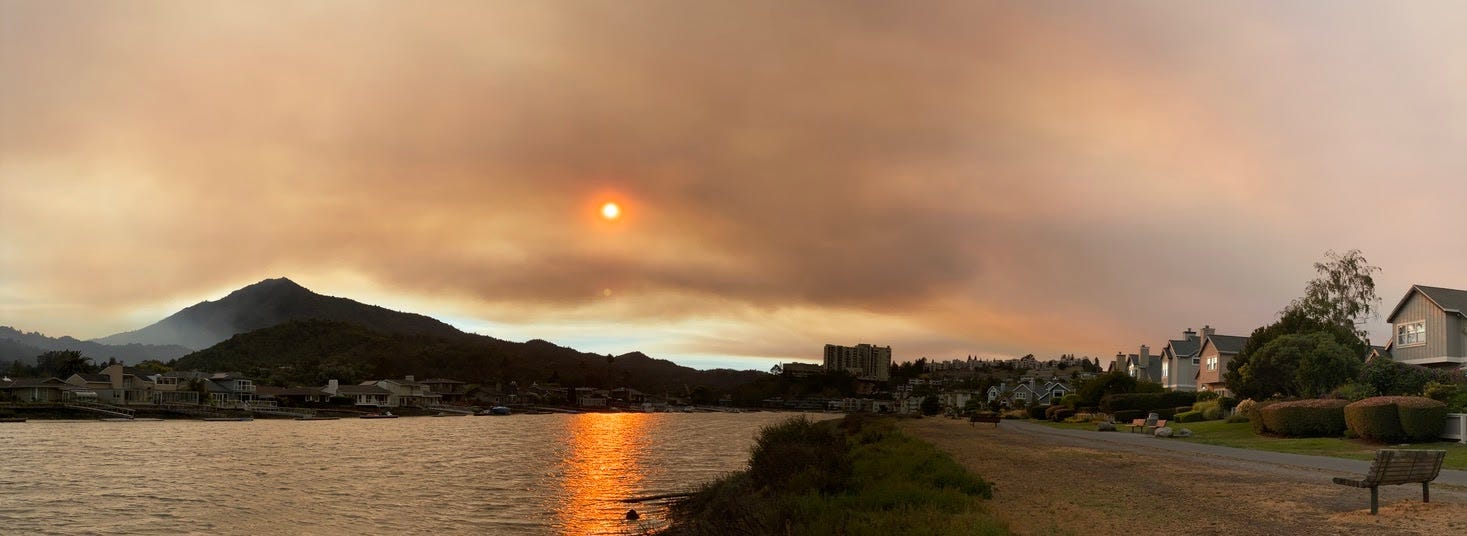
Between August and September of 2020, those of us in the San Francisco Bay Area were trying to findN95 masks, as if our very lives depended on them. There were days where you had to choose between wearing a face covering that would protect us from the pandemic or the wildfire smoke blanketing the region.
For over a month, the air was so bad in the Bay Area that wearing masks was embraced by both Democrats… and Republicans.
Whether you believe the fires were the result of space lasers or global warming or the climate crisis, fire season is now a year-round festival of lights. While the photo-ops are amazingly breathtaking, so is the smoke, unfortunately. And it’s not just here in California.
If you live anywhere west of the Atlantic Ocean, you’re at risk of inhaling toxic fumes. Even in Hawaii, wildfires have already climbed fourfold from previous decades.
A big misconception about wildfire smoke is that it only affects the air outside. (We don’t often take the quality of our indoor air too seriously.) But bad air can seep into your home — and be just as dangerous, too. I inadvertently discovered this when I purchased a PurpleAir Sensor to see what the air was like in my own neighborhood.
If you’re unfamiliar with PurpleAir sensors, they’re wifi-enabled, consumer-grade air quality monitors that measure airborne particulate matter (PM), such as dust, smoke, and other organic and inorganic particles. The data is uploaded to purpleair.com, where you can see maps showing the air quality from their millions of units around the world.
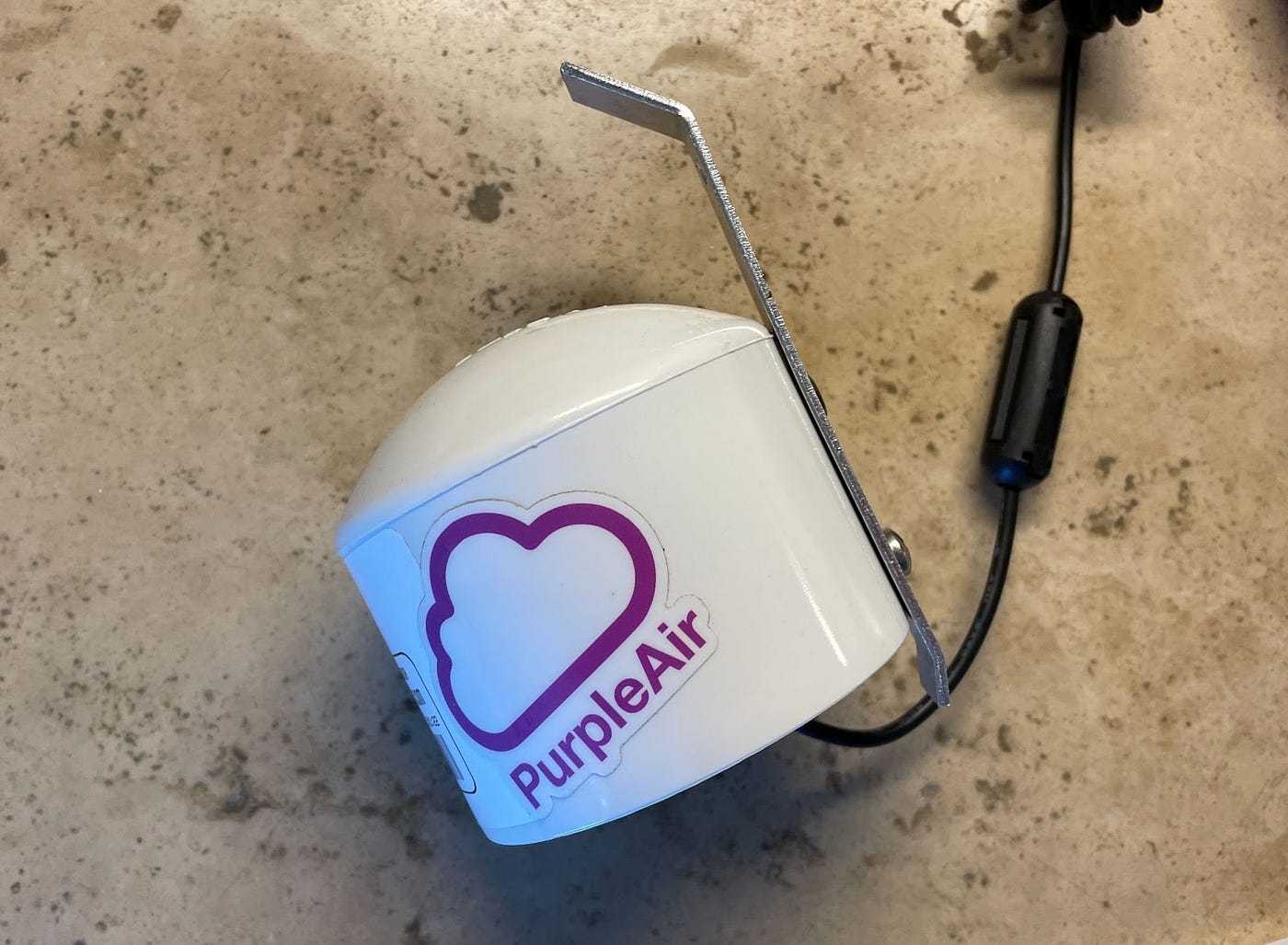
I mounted mine on the side of my house in Marin County, just north of the Golden Gate Bridge. Between August and September of 2020, the smoke drifted southward to Marin, as shown in the following series of PurpleAir maps generated during that time.
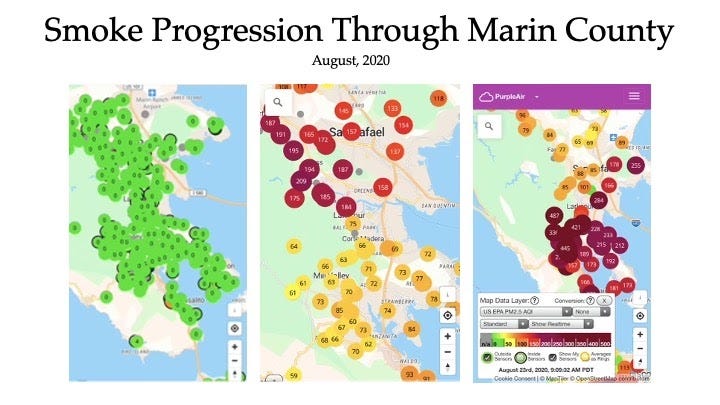
As you can see, the air quality went from “fantastic” (the green 0s on the left chart) to pretty horrific (the “purple dots”). By Aug 20, the air quality levels reached a high of 450, twice as bad as the most polluted industrialized cities in the world.
Knowing the air outside was bad, I wondered how the air was inside my house. So, I moved the sensor inside, and to my surprise, it was in the 90s, just shy of the “very unhealthy” zone.
There was no unusual smell in my house, so I thought something was wrong with the sensor; perhaps smoke or ash had gotten inside it from having been outside for so long.
So, I sent an email to customer service, and they said this doesn’t really happen, and suggested putting the sensor in a small room closed off from the house—like a closet—to see what it would say. I tried closets, the kitchen, and every room in the house, but they all reported the exact same high readings.
And that’s when it hit me: I haven’t run my air conditioner because it hasn’t been hot out, and without the AC running, there’s been no air circulation. So, I turned it on and waited a few hours to see if the levels changed. But nothing changed; the sensor still showed a level of 90.
I googled my AC system to see what its specs are, and that’s when I learned that the filters need to be changed every 6–12 months.
Duh.
I’ve never changed my air filter. And now that I know, the thought of changing this disgusting thing brought back visions of changing my son’s diapers when he was a baby. So, donning a mask and rubber gloves, I unscrewed the metal cover that hides the filter from sight and proceeded to remove it. What I found may not be appropriate for all audiences, but suffice to say, there was so much crap and other unmentionables, even Q himself would look away in horror.
Clearly, I needed a new filter, but I also wanted to confirm nothing was wrong with my PurpleAir sensor.
Then it occurred to me: I have a Tesla, which has an air filtration mode called BioHazard, which purports to produce completely pure air. I should be able to put my PurpleAir sensor inside the car and put both devices to the test. So I did. And within minutes, the data on the map dropped from 90 to zero. Yes, the ads are true: The air was pure. And the sensor worked.
Now I’m thinking: how can I do this in my house? Tesla’s AC system is basically a HEPA filter, which stands for High-Efficiency Particulate Air. HEPA is a standard developed by the United States Department of Energy. For a filter to qualify as HEPA-grade, it must be able to capture 99.97% of particles 0.3 micrometers in diameter. (Smoke is roughly in the 2.5 range. The Coronavirus is .2 micrometers.)
HEPA filters in Teslas are one thing, but getting clean air into your whole house is something entirely different. Such systems are used in hospitals, airplanes, and other high-risk environments. Amazon lists a number of units that can do single rooms for between $100–200. I have too many rooms, so no HEPA system for me.
But, maybe I could get a higher-grade filter for my HVAC system and just improve the air a bit. So, I googled, “furnace and air conditioner filters,” where an article from the NYTimes recommended the Nordic Pure MERV-12 filter, available on Amazon for $43 for a box of six.
Now, before you rush out and go buy these, let’s understand what MERV-12 means. MERV stands for Minimum Efficiency Reporting Values, which describes a filter’s ability to capture larger particles between 0.3 and 10 microns. MERV-12 filters capture particles down to 1 micron, so I figured that should be good enough. (Lower-rated filters capture particles of progressively higher sizes.)
Turns out, Amazon was out of them (surprise, surprise), so I went to my local Home Depot and, naturally, they were out of them too. In fact, they were out of all the higher MERV-rated filters.
All the stored had left were some “7s,” which are only rated to capture particles down to three microns. But then I also noticed that the Wirecutter article said, “The EPA says filters rated MERV 7 to 13 are likely to be nearly as effective as true HEPA filters at controlling most airborne indoor particles.”
Wow! Is a MERV-7 filter as effective as a HEPA filter? Now that would be impressive! Let’s try it!
So, I installed the cheapo MERV-7 in the cold air return of my HVAC system and turned on the HVAC unit to “fan” mode. No heat or AC — just the fan. That sucks up air from inside the house through the filter.
Shockingly, within 30 minutes, the Purple Air sensor reading dropped to the 30s (which is perfectly normal for the Bay Area anyway), but within an hour, it hovered between 1–8. I moved the sensor to different rooms and found that all the rooms had single-digit readings. Alas, I got HEPA-quality air from a MERV-rated filter of 7, which cost $35 for a box of six. That’s six years’ worth of clean air for less than a box of N95 masks!
I started telling friends about my experiment, and the first response I got was, “How can I do that without an HVAC system? I’ve got nothing to circulate the air!”
And that’s when my next idea came to me: The filters I bought are 20x20” square. And I have a square box fan that’s — you guessed it — 20x20”. Why not use the box-fan and filter combination?
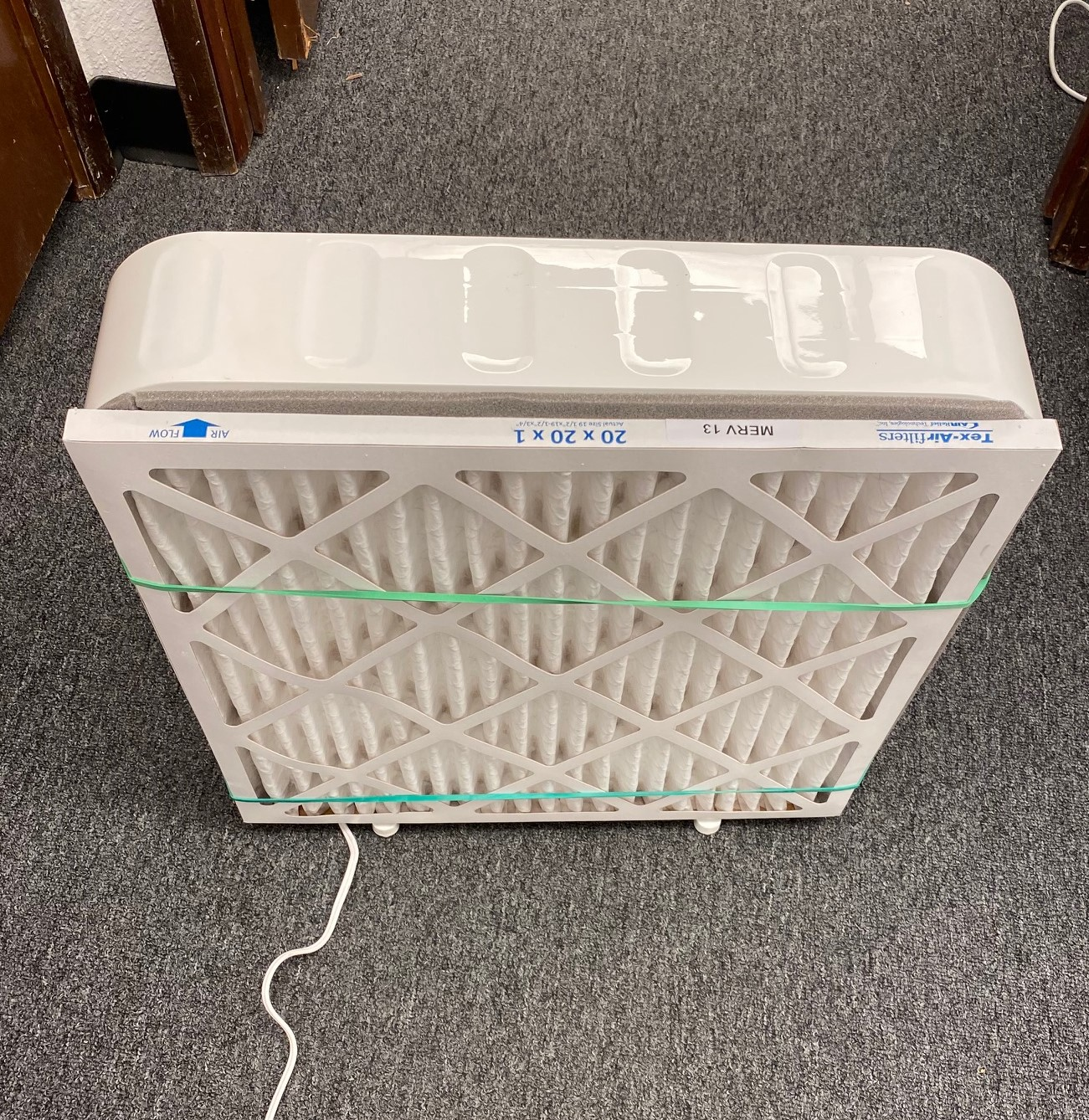
Turns out, I’m hardly the first person to think of this — apparently, people have been doing it for years. The photo above is using a MERV-13 filter because it was taken from this article, which not only has a great description of how to make one, but they also do serious scientific measurements to quantify exactly how many particles of various sizes the system was able to remove. In fact, their measurements show it’s a great filtration system for COVID-19 as well.
Why not start with that?
Well, a fan/filter combo is really only useful for a single room, which may be fine if you only need one room done, or you don’t have an HVAC system. In such cases, this combo would be a great way to keep particles from getting out of that room.
But as a general air-purifying technique for a multi-room house, it’ll be a bit expensive. If you’ve got any kind of centralized air circulation, using a MERV-7 rated filter may be the best way to go.
Sign up for The Bold Italic newsletter to get the best of the Bay Area in your inbox every week.
Now that fire season is among us, you’ll want to prepare your air so you can breathe freely without having to mask up. Unless, of course, you’ve really come to like wearing masks now, and you’ve invested in some pretty swanky, stylish, and politically appropriate masks.
Not judging. You do you.



